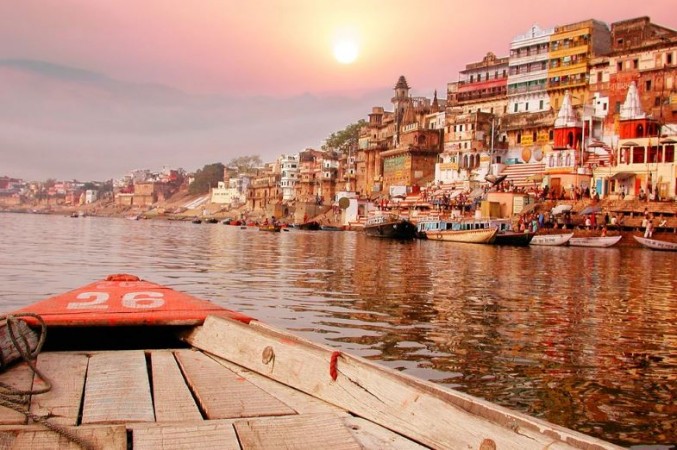
India is blessed with a network of majestic rivers that roam its vast and diverse landscape. These rivers are not only lifelines for millions of people but also carry deep cultural and historical significance. The top 5 rivers of India include the holy Ganga, the Yamuna, the Narmada, the mighty Brahmaputra, and the sacred Godhavari. These rivers go through different regions, bestowing fertility to the land, providing water for irrigation, and supporting diverse ecosystems. They are known for their religious importance, serve as pilgrimage sites, and have witnessed the rise and fall of ancient civilizations. These rivers are a testament to India’s rich natural and cultural heritage.
Top 5 Rivers in India –
1. Ganges River –
Also known as Ganga, is one of India’s most sacred rivers. Flowing through the northern path of the country, the Ganga holds immense religious significance for Hindus, who believe that bathing in its waters cleanses sins. The river is dotted with numerous ghats, or steps, where devotees gather for rituals and prayers. It is also home to the holy city of Varanasi, a spiritual hub. However, the Ganga faces significant challenges such as pollution and environmental degradation, prompting conservation efforts to protect its ecological integrity and preserve its cultural heritage.
2. Yamuna River –
The Yamuna River, a major tributary of the Ganges, flows through the heart of northern India, bestowing both historical and cultural significance. Considered sacred by Hindus, the Yamuna is closely associated with myths and legends of Indian folklore. It is an integral part of religious rituals, and its banks are adorned with numerous temples and ghats where devotees gather to worship and perform ceremonies. However, the river is facing serious challenges such as pollution. Efforts are being made to revive and restore Yamuna’s health and ecological balance through conservation initiatives and wastewater treatment projects. Preserving Yamuna’s sanctity is crucial for maintaining India’s cultural heritage and ensuring the well-being of the communities that depend on it.
3. Godavari River –
The Godavari River, often referred to as the Ganges of the South, is the second-longest river in India. Flowing through central and southern regions of the country, it holds immense cultural and religious significance. It is considered a sacred river, and its banks are dotted with temples and ghats. It sustains the fertile lands along its course, providing water for irrigation and supporting diverse ecosystems. The river is known for its amazing landscapes and is celebrated in literature, art, and folklore. The Godavari also faces challenges such as pollution and deforestation. Conservation efforts are underway to protect its beauty and ensure the well-being of the communities that depend on it for their livelihoods.
4. Brahmaputra River –
The Brahmaputra River, originating in the Tibetan Himalayas and flowing through northeastern India, is one of the longest and mightiest rivers in the country. Known for its beauty and cultural significance, the Brahmaputra holds a special place in the hearts of the people in the region. It carves through breathtaking valleys, gorges, and plains, supporting a rich biodiversity and sustaining the livelihoods of millions. The river plays a crucial role in irrigation, transportation, and hydropower generation. The Brahmaputra also faces challenges such as frequent floods and erosion. Conservation efforts are being undertaken to protect its delicate ecosystem and ensure sustainable use of its resources while preserving its cultural heritage.
5. Narmada River –
The Narmada River, originating from the Amarkantak Plateau in central India, holds immense significance both culturally and ecologically. Famous as a sacred river, it is believed to be a manifestation of the Hindu Goddess Narmada. The Narmada flows through the states of Madhya Pradesh, Gujarat, and Maharashtra, providing water for irrigation and supporting diverse ecosystems. It is surrounded by many temples and ghats, attracting devotees from far and wide. The river has witnessed the rise and fall of ancient civilization and carries the legacy of rich historical and cultural heritage. The Narmada faces challenges such as water pollution and excessive damming; efforts to balance development and conservation to preserve its natural integrity and sustain the communities that depend on it are being taken.
Also read: Spiritual Places To Visit In India